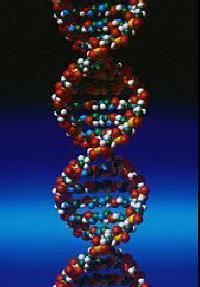End of genetic competence
2000/06/27 Roa Zubia, Guillermo - Elhuyar Zientzia
Although the entire sequence is about to be known, the genome requires much more work to make it useful
To know the sex-count of the human genome, a lot of money has been introduced and that investment must be profitable. Perhaps that is the clearest conclusion that can be drawn. The genome is long. It has a lot of information about the design of the whole human being. Since it was known that the DNA molecule stores this information, methods were invented to obtain the information.
The genome of several bacteria was sequenced long ago. But they are very small beings and have a simple genome. However, the human being needs a very large genome to accumulate all the information. The information is distributed in 23 chromosomes. Some are large and some are small, but in total you have to read 3,000 million data. The genome has been researched for many years, but almost always decoding small fragments, without totally systematizing the work and with indirect experiments. In this way the information of some chromosomes was associated with biological functions. Experiments of great importance, certainly. Finally, an international group systematically unified resources and methods for the decoding of the human genome and launched in 1990 the public project called Human Genome Project (HGP).
Although genetic technology was rapidly advancing, the methodology that began to be used was slow. The first idea was to finish in 15 years. Progress made it possible to reduce the deadline. It was announced its completion in 2003.
In 1998 it was discovered that a private company launched the same project, the company Celera Genomics Corporation. This company wanted to use a new and faster methodology. Then the HGP strategy was modified, trying to somehow accelerate the process. Instead of performing the work with great precision, a draft genome map will be prepared in a shorter time. From this draft a concrete work would be undertaken.
At full speed
Celera Genomics has followed a different strategy. Break the whole genome and read the code of all the pieces. Yesterday it was announced that this work is about to end. This means it is faster than the PNS strategy. In fact, before becoming fully involved in the project, Celera Genomics demonstrated the speed of the methodology with the genomes of small organisms. What could be a month-long job they did in weeks. Perhaps the most important was the fly genome Drosophila melanogaster. The results were published in the specialized journal Science on March 24 of this year.
Celera Genomics is not the only private company that has worked on this task. The Monsanto company, for example, decoded the rice genome. He pioneered the research of plant genomes. In March the debate on genome privatization was at its peak. Presidents Bill Clinton and Tony Blair said the genome should be public. As a result, the Celera Genomis company's contribution suffered a stock market failure. Those of the company, angry, accused the two presidents of defeat. The company launched strategic action and in early April announced that they had the entire genome. It was not entirely true, because they lacked parts to decode, but it was a news of great repercussion in the press. The most complicated work in the decoding process is that of the last parts. Celera Genomics said she was going to make the data public. But it is not clear how they will recover that money.
The competition will now be over. A new strategic decision is announced. HGP and Celera Genomics will work together. In fact, they will announce that they have the full genome draft. In these last steps, both methodologies can be complementary. However, there is no better strategy for public opinion.

Gai honi buruzko eduki gehiago
Elhuyarrek garatutako teknologia





